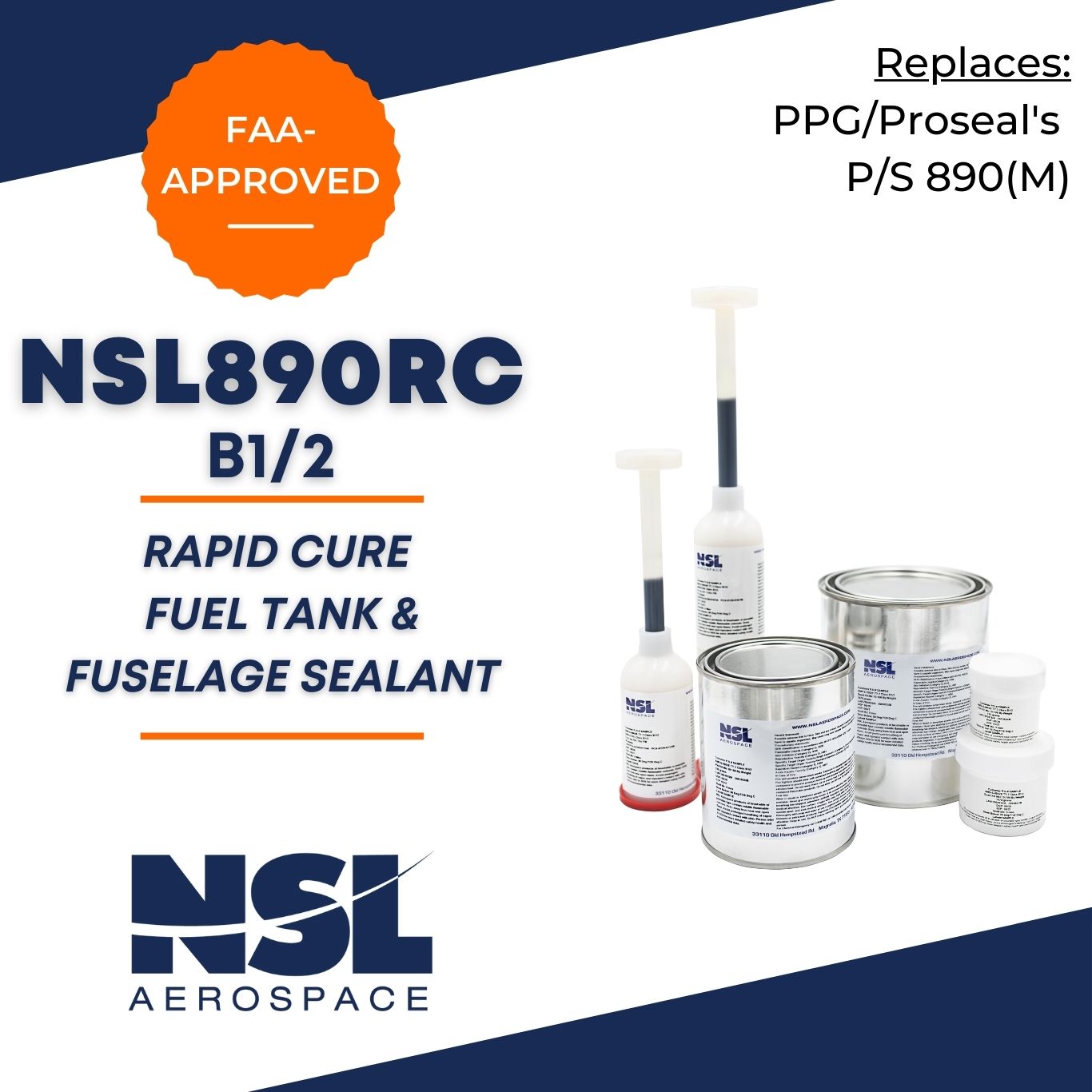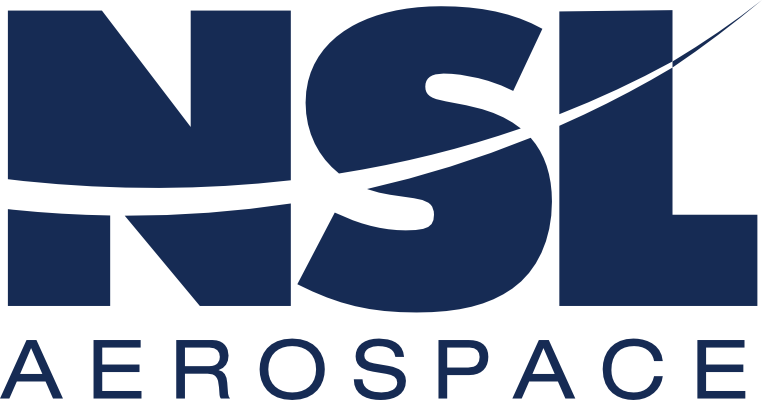OUR CAPABILITIES
NSL PMA Sealants
What are NSL PMA sealants?
They are the first ever FAA approved PMA aerospace sealants in the industry to establish cost effective alternatives to commonly used PPG/PRC aerospace sealants.

What's a PMA?
A Parts Manufacturer Approval (PMA) is an alternative product that can be safely used in place of an original part in the maintenance of type-certified aircraft, accessories, engines, and propellers, as approved by the FAA.
“No person may produce a modification or replacement article for sale for installation on a type-certificated product (an aircraft, engine, or propeller) unless this article is produced in accordance with a PMA issued by the FAA under 14 CFR part 21 Subpart K (sections 21.301 through 21.320)”.
The FAA process for approval is rigorous. A PMA part is required to be as good or better in quality than OEM part it’s replacing.
Why did we pursue PMA sealants?
Because for years, we listened to our customers express frustration with OEMs and large distributors. The lead times were long. The pricing was high. They were ignored by their customer service or sales rep. So, we decided to change that, and in 2004, we started working towards FAA approved PMA sealants. In 2008, we received the FAA’s approval and took our sealants to market.
Why should you buy PMA sealants?
[Wrap text around an image of the PMA cross reference chart]
- Cost savings: PMA parts are now a key component of the airline industry. PMA parts often make it easier to meet your budget and see increased profit margins. On average our customers see a 30-50% savings with our PMA sealants.
- Shorter lead times: Most OEMs have exceedingly long lead times that can produce genuinely big issues and problems. By contrast, PMA manufacturers focus on delivering products quickly. The more manufacturers and distributors with alternatives and replacements, the more options you have to source and opportunities to sidestep long lead times. One of our strengths is a quick turnaround and JIT deliveries.
- Supply chain whiplash: Vendor management is key to your aviation operations, as anyone in the business knows. Having a choice in vendors empowers you to control costs, be less receptible to supply chain interruptions, and reduce any risks caused by a vendor’s delivery habits.
- Improved product performance: The FAA requires that a PMA part be as good as or better than the OEM equivalent. Our NSL PMA Sealants are rigorously tested and reliable replacements for comparable PPG / PRC parts with significantly faster cure times than most of their replacements.
Got questions about how to match a PMA Sealant to a PRC/PPG Product? Our PMA Cross Reference Chart will answer them all.
Since the benefits are so easy to see, why hasn’t everyone switched over to PMA sealants?
[Wrap text around the two images of advisory circulars]
There may be a couple of reasons. Let’s tackle some of the common PMA myths and misconceptions first. OEMs have run effective smear campaigns against PMAs since they first appeared on the market. They have benefitted by spreading falsehoods about PMA. Some common PMA myths that may be holding you back. You can fly safely, knowing that they are totally untrue. See if you’ve heard any of these myths.
Myth #1: PMA parts are inferior to OEM parts
For decades, OEMs have wanted to undermine PMA parts. PMA parts eat away at their bottom line. But they can’t cover up this fact: The FAA requires that a PMA part be as good as or better than the OEM part. The PMA is put through extensive testing to accumulate the data that can prove this to be true. After the PMA is granted, PMA holders are responsible for continued operational safety. This is why we can say that PMA sealants truly perform as well as or better than the OEM sealant. (Read about our Quality and Service here.)
Myth #2: Sealants aren’t parts and don’t qualify for a PMA
Over the last 12 years, the FAA has repeatedly confirmed the legitimacy of PMA sealants. Finally, in 2014, the FAA released Advisory Circular No. 21.303.4 which explicitly included sealants in the language of 14 CFR 21.1’s explanation of items that fell under the definition of “article.” This absolved sealant OEMs any claims as to the legitimacy of a competing PMA sealant.1
“This AC refers to parts and components as articles per 14 CFR 21.1. This section defines an article as a material, part, component, process or appliance. These items may include sealants, modified standard parts, brake assemblies, etc. that are in a product’s type design. Please note PMA is not for base materials, processes or inspection procedures.” 1
Myth #3: PMA sealants should be considered critical parts
The FAA’s definition of critical parts as stated in FAA AC No. 43-18 (Change 2): “A critical part performs a function of such significance (critical function) to the aircraft on which it is installed that, if it failed, the airworthiness of the aircraft would be degraded to an extent that would preclude continued safe flight or landing.”
Therefore, a non-critical part would be a part that DOES NOT perform “a function of such significance (critical function) to the aircraft on which it is installed that, if it failed, the airworthiness of the aircraft would be degraded to an extent that would preclude continued safe flight or landing.”
If a critical part fails, then the entire aircraft is at risk and is no longer airworthy. An aviation sealant does not have the necessity that critical parts do. Per the FAA, no sealant is designed or used on aircraft or engine in areas for conditions putting an aircraft at risk. If a sealant is not installed properly or fails in action, the aircraft would not “be degraded to an extent that would preclude continued safe flight or landing.” That’s the bottom line.
Common hurdles to implementing and using PMAs
When you get past the myths and misconceptions about PMA, there are likely hurdles you will have to overcome in order to implement a PMA sealant on your aircraft. To change or replace approved parts on an aircraft is challenging. Here are just a few you might face:
- Our NSL PMA isn’t on your Qualified Product List (QPL).
- Your customers might state they don’t want PMA parts used on their aircraft.
- You might have a contract with a vendor or chemical management company that lumps together multiple parts and doesn’t allow for individual changes.
- You still might not be comfortable using PMA parts and want more information.
This is how we can combat the above hurdles:
- Get it added to your QPL. Using PMA parts in exchange for OEM parts could necessitate discussions with customers, engineers, maintenance directors, purchasing directors, quality, and others. This might seem like a burden, but the end rewards are worth the effort.We can provide you with all of the necessary documentation required for approval and walk you through the common questions and concerns that our customers have when adopting PMA. On our All Products page, you’ll find tech data sheets as well as links to their corresponding FAA supplements. You can also find or research our PMA or any other by make, PMA holder, and part number in the FAA’s PMA database. This is where you will find the FAA PMA Approval Supplements that lists make and model of the aircraft upon which the part can be used.
- Speak to your customers about the benefits of PMA.
- Include the use of PMA when you’re renegotiating your contract with your vendor or chemical management company.
- Read our definitive guide and learn more about PMA. PMA parts are an important player in the future of the aerospace industry. With the incredible growth projected for aerospace and aviation over the next decade, a monopoly on parts won’t be sustainable.
While implementation can be challenging, it’s important to remember the benefits of NSL PMA sealants are significant: cost savings, shorter lead times, stronger supply chain, and improved product performance.
An additional benefit is NSL’s strength as a vendor. We pride ourselves on our customer-centric service and our high-quality standards. We are committed to assuring customer satisfaction through delivery of aviation products that meet or exceed expectations of fitness for use, performance, safety, and reliability. We do this through a system of continuous improvement that includes total employee involvement.
We also have a lab in-house and every NSL PMA product goes through a second round of additional testing. We stand behind that quality of all our products as they are tested to ensure performance to quality standards and specifications.
All of this to say
We’ve got a lot to say about PMA sealants. Got more questions? Customer service is our first priority, and we’re here for you!
